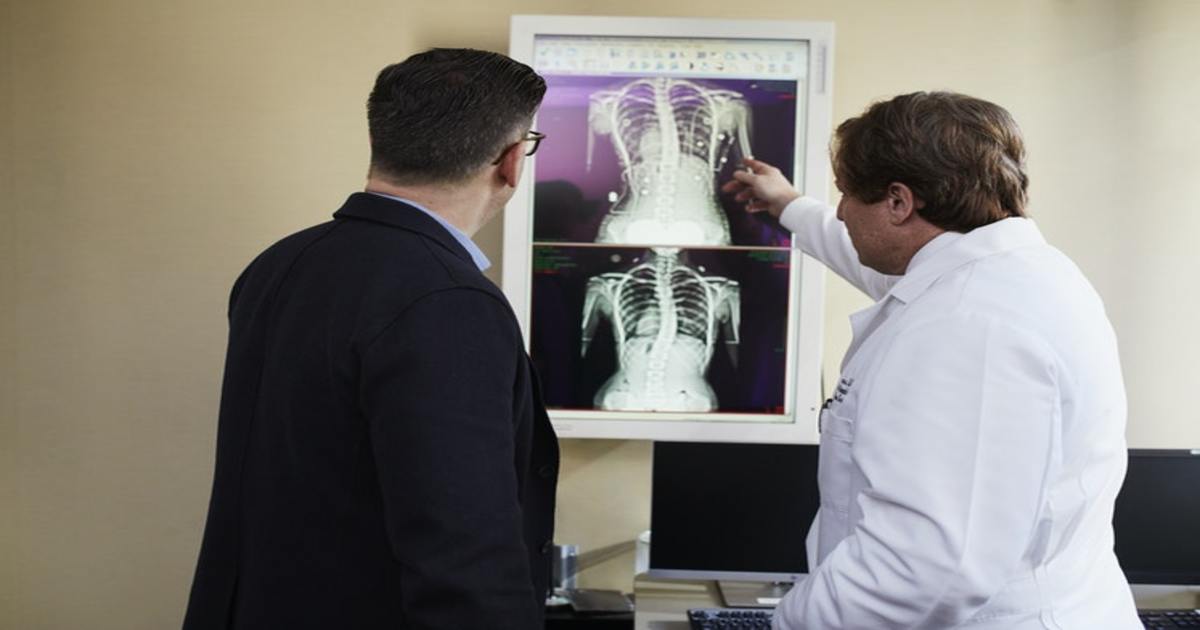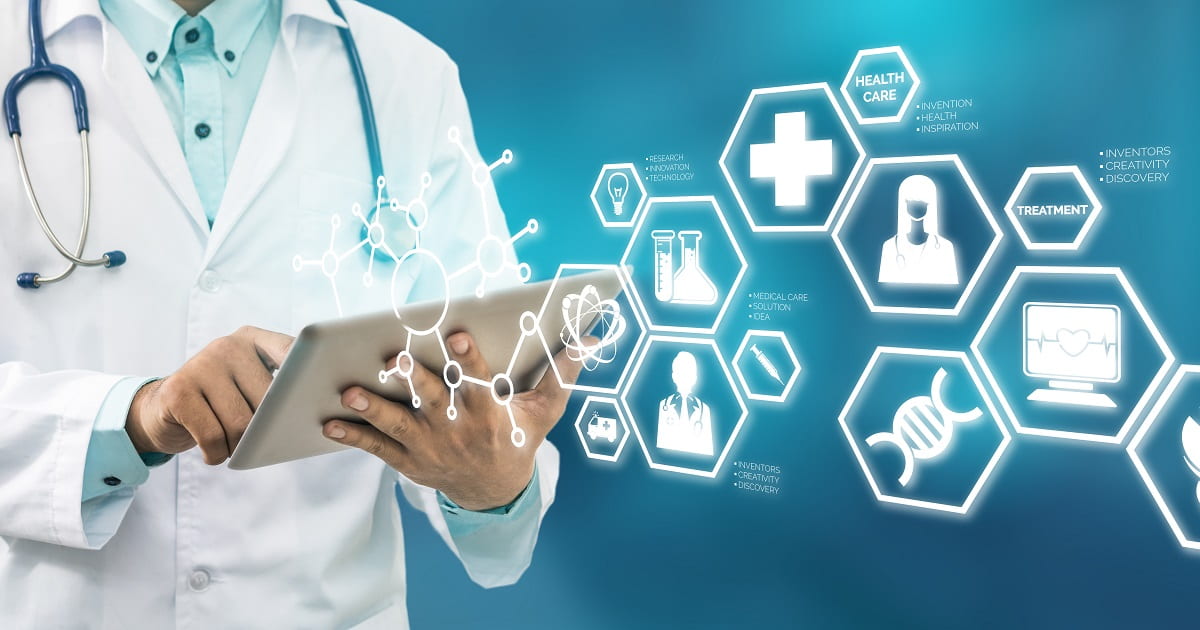
Health Technology, Digital Healthcare
Article | September 7, 2023
The healthcare industry is experiencing rapid shifts. Some of this is due to the current pandemic, but much of this evolution was happening even before the COVID-19 outbreak. Understanding and embracing the introduction of new technology into the market will be important for healthcare professionals and patients alike. Here are some of the trends worth keeping tabs on:
Read More

Health Technology, AI
Article | July 18, 2023
Healthcare leaders are embracing the benefits of the cloud and software as a service (SaaS) after the pandemic challenged them to adapt and innovate like never before. 66% of them expect to move their technology infrastructures to the cloud this year – a number that is set to rise to 96% by 2024 [1]. Yet moving to the cloud is more than just a technology transformation. It’s an organizational transformation. Through cloud-based platforms and solutions, healthcare systems can begin to unlock clinical and operational insights at scale while speeding up innovation cycles for continuous value delivery.
Integrating data across the care continuum
In many ways, COVID-19 catapulted healthcare into the future. The pandemic created a new urgency for healthcare leaders to expand their virtual care offerings as a way of connecting with patients beyond the walls of the hospital. At the same time, they wanted the flexibility to scale up or down without large upfront capital expenditures. Effective crisis management also required the rapid exchange of patient information across systems and care settings. Thanks to the flexibility of pay-as-you-go cloud-based services and solutions, healthcare providers were able to quickly scale up digital health technologies to meet new demands. As a result, the acceptance of cloud has increased remarkably [2].
Keeping patient data secure and compliant
As healthcare leaders embark on this journey to the cloud, data protection is a critical consideration. Data processing in healthcare must comply with rigorous standards, whether it is HIPAA in the US or GDPR in the EU. Unfortunately, healthcare organizations also remain a top target for data breaches, calling for additional data security protection measures [3].
While the need for data security and regulatory compliance has historically motivated healthcare organizations to keep data on premises, today there is a growing awareness that moving to the cloud can in fact be the better road to travel. In fact, 60% of healthcare leaders now cite security as one of the top benefits of the cloud [4]. When healthcare organizations rely on their own data centers, they are responsible for security from end to end, which can become prohibitively complex and time-consuming as IT infrastructures expand over time. Cloud-based services and solutions can reduce dependency on local hardware to store sensitive data while automated software updates keep systems current.
Turning data into insights at scale at the point of care
Working from these foundations, the next big opportunity in healthcare is to capture the insights in the data that we are beginning to connect and integrate. This is where the cloud is also turning into a vital enabler, with its powerful computing resources and advanced machine learning capabilities, offered as microservices. These microservices provide the building blocks to develop new digital solutions that, once validated and approved, can be deployed at scale to help improve clinical outcomes and operational efficiency.
Enabling rapid experimentation and continuous value delivery
Embracing the cloud also changes the very nature of innovation in healthcare.
Healthcare-compliant cloud platforms offer a flexible foundation for rapid development and testing of digital applications. Cross-functional teams working in short and agile cycles can put new digital applications into the hands of physicians or patients more quickly, and then add new or improved features and functionalities as they gather additional user feedback. That means healthcare organizations get to innovate faster. And in smaller, more digestible increments.
Moving to the cloud is not all or nothing
Of course, none of this is to suggest that moving to the cloud is like switching a button. It’s a complex and multi-year journey for most of our customers. And it’s quite a journey for Philips, too. Any organization that has accumulated a large number of legacy systems and infrastructures over the years will have to manage a hybrid architecture during their journey to the cloud [5].
Read More

Healthtech Security
Article | November 29, 2023
COVID-19 has been a catalyst for change, with the diagnostics industry taking centre stage and rising to the challenge of a global pandemic. One of the silver linings of this mammoth task has been the unprecedented time and focus dedicated to finding new technologies and solutions within the sector.
The lessons learned from the pandemic now need to be taken forward to improve breast and cervical cancer detection, prevention and treatment across the UK over the coming years.
In the more immediate term, the diagnostics industry, alongside public health leaders, faces a daunting backlog as screening programmes for breast and cervical cancer were put on pause for months. These two life-saving tests have been some of the most overlooked during the pandemic and getting back on track with screening is critical as we start to turn the corner. We believe innovation in diagnostics, particularly artificial intelligence guided imaging, is a key tool to tackle delays in breast and cervical cancer diagnosis.
The scale of the backlog in missed appointments is vast. In the UK, an estimated 600,000 cervical screening appointments were missed in April and May 2020. And an estimated 986,000 women missed their mammograms, of which an estimated 10,700 could be living with undiagnosed breast cancer. It is clear that hundreds of thousands of women have been affected as COVID-19 resulted in the reprioritisation of healthcare systems and resource allocation.
Both cervical and breast cancer screening are well suited for digital technologies and the application of AI, given both require highly trained medical professionals to identify rare, subtle changes visually –a process that can be tedious, time-consuming and error prone. Artificial intelligence and computer vision are technologies which could help to significantly improve this.
What does AI mean in this context?
Before examining the three specific areas where digitisation and AI can help, it is important to define what we mean by AI. It is the application of AI to medical imaging to help accelerate detection and diagnosis. Digitisation is the vital first step in implementing an AI-driven solution – high quality images demand advanced cloud storage solutions and high resolution. The better the quality of the input, the more effectively trained an AI system will be.
The first area where AI-guided imaging can play a role is workflow prioritisation. AI, along with increased screening units and mammographers, has the potential to increase breast cancer screening capacity, by removing the need for review by two radiologists. When used as part of a screening programme, AI could effectively and efficiently highlight the areas that are of particular interest for the reader, in the case of breast screening, or cytotechnologist when considering cervical screening.
Based on a comparison with the average time taken to read a breast screening image, with AI 13% less time is needed to read mammogram images, improving the efficiency with which images are reviewed. This time saving could mean that radiologists could read more cases a day and potentially clear the backlog more quickly.
For digital cytology for cervical cancer screening, the system is able to evaluate tens of thousands of cells from a single patient in a matter of seconds and present the most relevant diagnostic material to a trained medical professional for the final diagnosis. The job of a cytotechnologist is to build a case based on the cells they see. Utilising these tools, we are finding that cytotechnologists and pathologists are significantly increasing their efficiency without sacrificing accuracy to help alleviate the backlog of cervical screening we are seeing in many countries.
Prioritising the most vulnerable patients
Another key opportunity is applying AI to risk stratification, as it could help to identify women who are particularly at risk and push them further up the queue for regular screening. Conversely, it would also allow the screening interval for those women at lower risk to be extended, creating a more efficient and targeted breast screening programme.
For example, women with dense breast tissue have a greater risk factor than having two immediate family members who have suffered from breast cancer. What’s more, dense breasts make it more difficult to identify cancerous cells in standard mammograms. This means that in some cases cancers will be missed, and in others, women will be unnecessarily recalled for further investigation.
A simple way to ensure that those most at risk of developing breast cancer are prioritised for screening and seen more regularly would be to analyse all women on the waiting list with AI-guided breast density software. This would allow clinicians to retrospectively identify those women most at risk and move them to the top of the waiting list for mammograms.
In the short term, to help tackle the screening backlog, prior mammograms of women on the waiting list could be analysed using the breast density software, so that women at highest risk could be seen first.
Finding new workforce models
Being able to pool resources will allow resource to be matched to demand beyond borders. Globally, more than half a million women are diagnosed with cervical cancer each year and the majority of these occur where there is a lack of guidance to conduct the screening programme. The digital transformation of cervical screening can connect populations that desperately need screening to resources where that expertise exists. For example, developing countries in Africa could collect samples from patients and image these locally, but rely on resources in the UK to support the interpretation of the images and diagnoses. Digital diagnostics brings the promise of a ‘taxi-hailing’ type model to cervical cancer screening – connecting groups with resources (drivers with cars) to those who are in need (passengers): this is an efficient way of connecting laboratory professionals to doctors and patients around the world.
It’s going to take many months to get cancer screening programmes up and running at normal levels again, with continued social distancing measures and additional infection control impacting turnaround times. But diagnostic innovation is on a trajectory that we cannot ignore. It will be key to getting cancer screening programmes get back on track. AI is a fundamental piece of the innovation puzzle and we are proud to be at the forefront of AI solutions for our customers and partners.
Read More

Digital Healthcare
Article | December 27, 2021
Affordable healthcare is the need of the hour and interoperability is the means to that end. The healthcare ecosystem is looking into ways they can enable this affordability as soon as possible, and that is where FHIR comes in. FHR promises an on-demand exchange of secure healthcare information. It has become an increasingly popular protocol, thanks to its commitment to ensuring interoperability in the app economy, via apps.
The privilege enjoyed by consumers and participants in most industries is the ease of accessibility of information. With most of it being on the cloud, a URL ensures access to the same information regardless of where it is being accessed from or which internet enable device. This is the privilege FHIR aims to introduce in healthcare, over the current document-based approach where forms are either faxed, emailed, or electronically exchanged.
FHIR is for
Building new healthcare apps
Develop cloud-based health apps that integrate with social networks
Providing a simple to use standards-based API for cloud-based health integration services
The government looking to implement a national EHR
FHIR Aims to Reduce Cost
The medical expenses of an average American in a year are north of $12k and rising. The reasons are the unnecessary complications in the healthcare IT infrastructure. With FHIR, HL7 aims to reduce the burden on providers in sharing and accessing healthcare data at the point of care, thereby reducing the administrative expenses spent on moving data back and forth. It also promises to grant on-demand access to patients – enabling them to make better-informed healthcare decisions.
What is part of FHIR?
Pre-defined Resources and API
A common way to represent data as building blocks and rules for connecting them
Target support for common scenarios
Implementer Friendly
Familiar tooling and technologies using web standards
Multiple Libraries available for faster implementations
Mobile Friendly
Concise and easily understood specifications, RESTful API and JSON
Leverages cross-industry web technologies
Multi-paradigm
Thick client, browser, or mobile devices
Supports human readability as the base level of interoperability
Large Community for Support
Heaps of open-source software and training events, webinars, and connectathons
Specification feedback welcomed, including update requests-tracker
Out-of-the-box Interoperability
Base resources can be used as it is, can also be adapted for local requirements
Seamless exchange of information using messages or document
Start The FHIR
Health plans are jumping on the FHIR bandwagon faster than ever thanks to the Interoperability and Patient Access rule as well as the latest proposals. Do not get left behind or sustain the ramifications of non-compliance with CMS regulations.
Read More